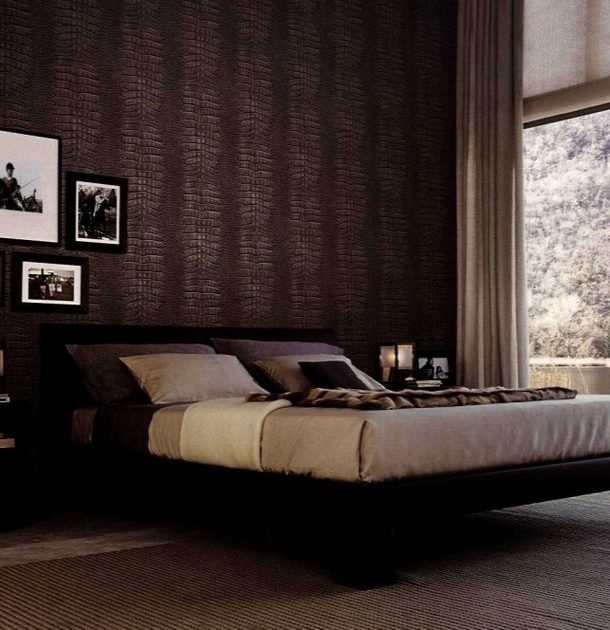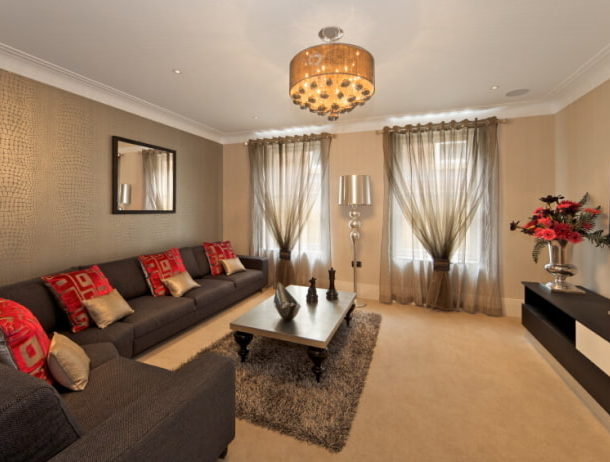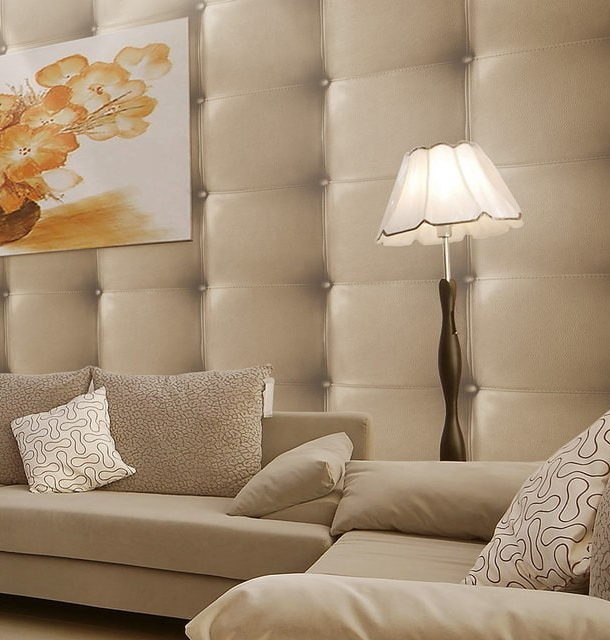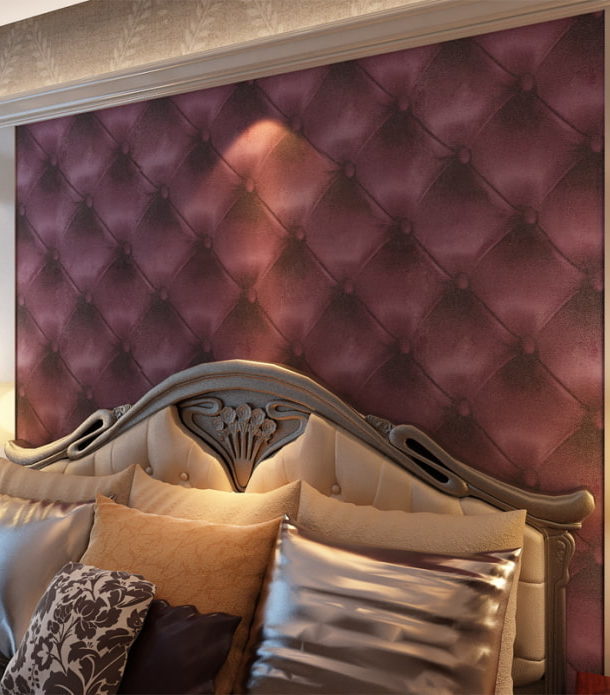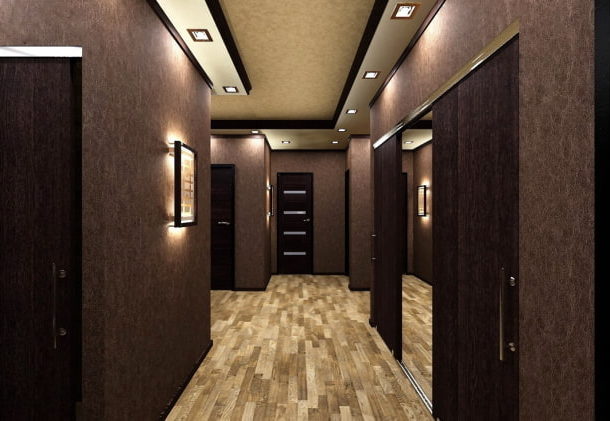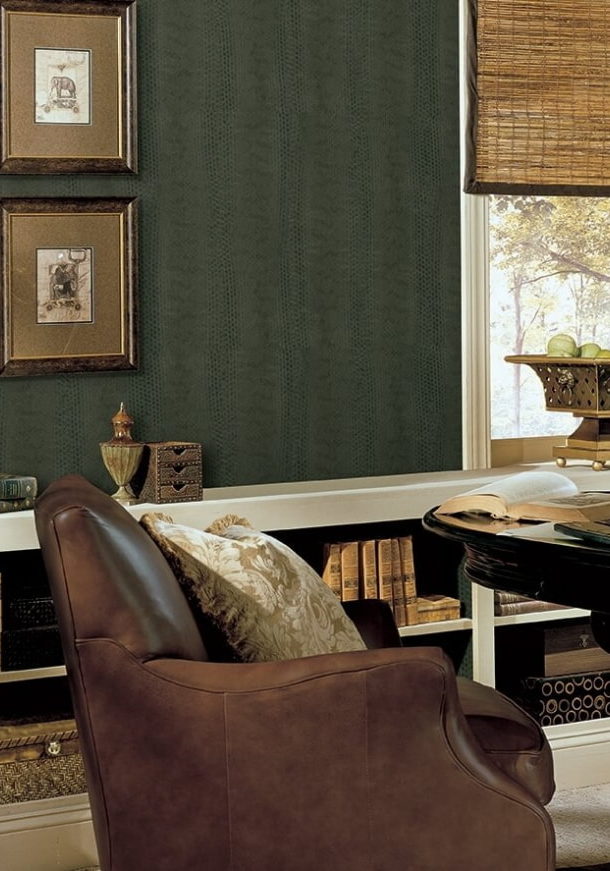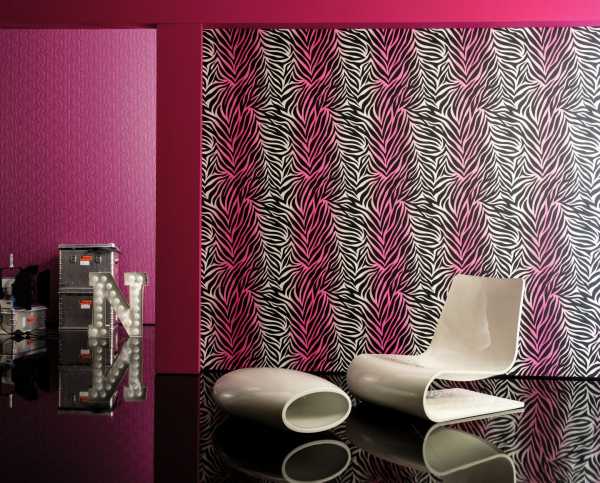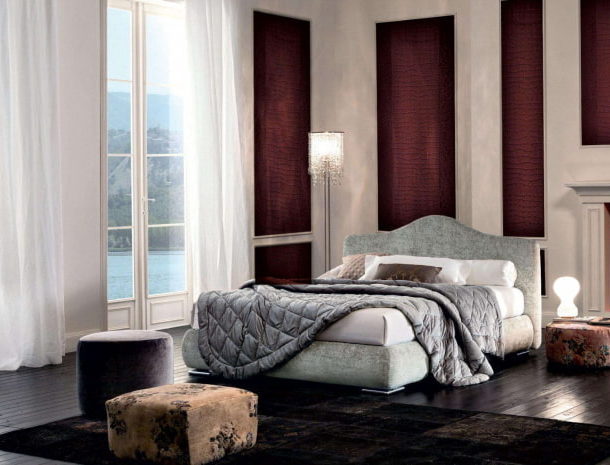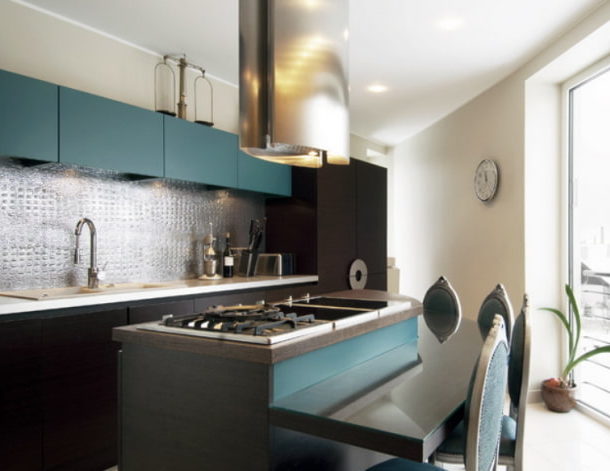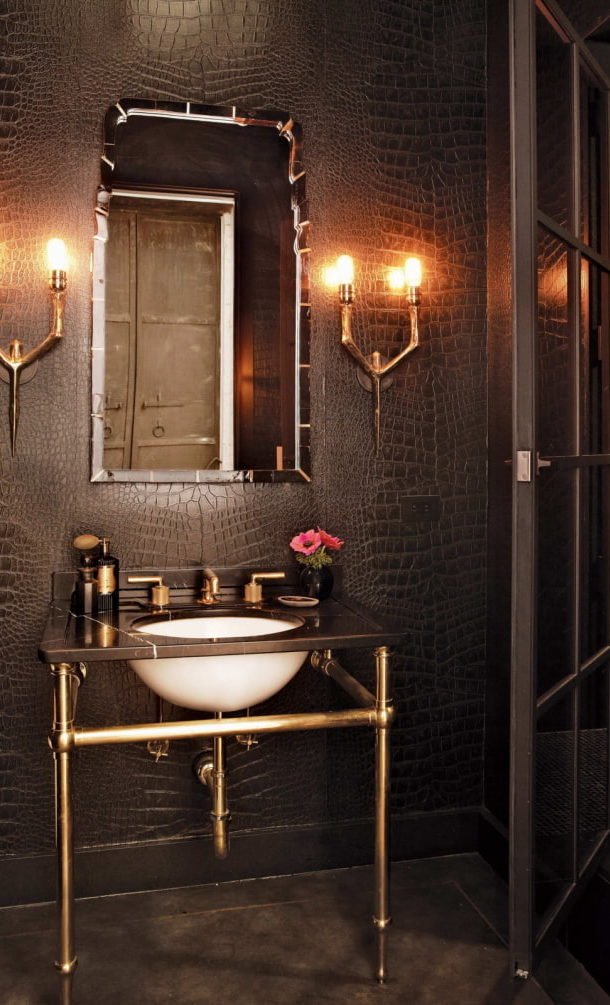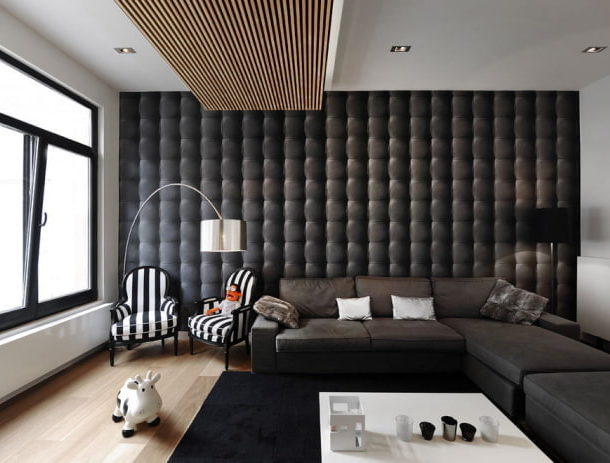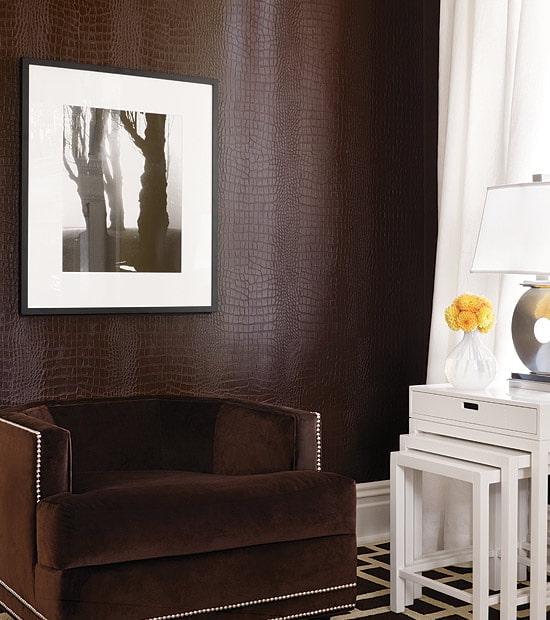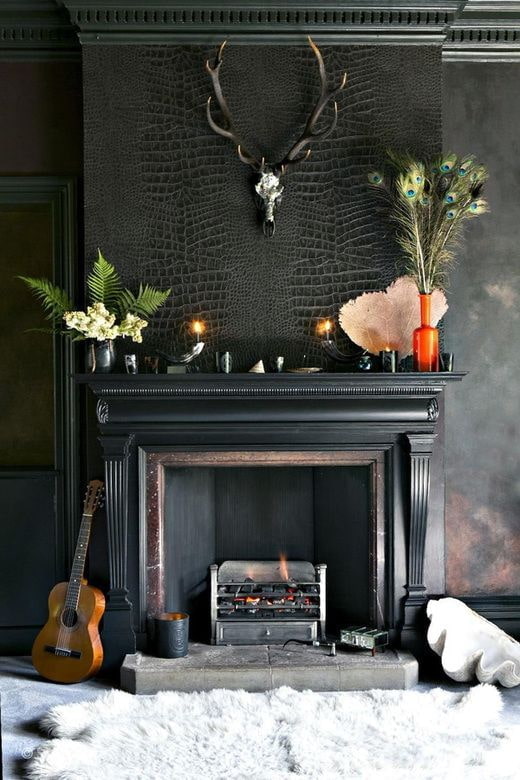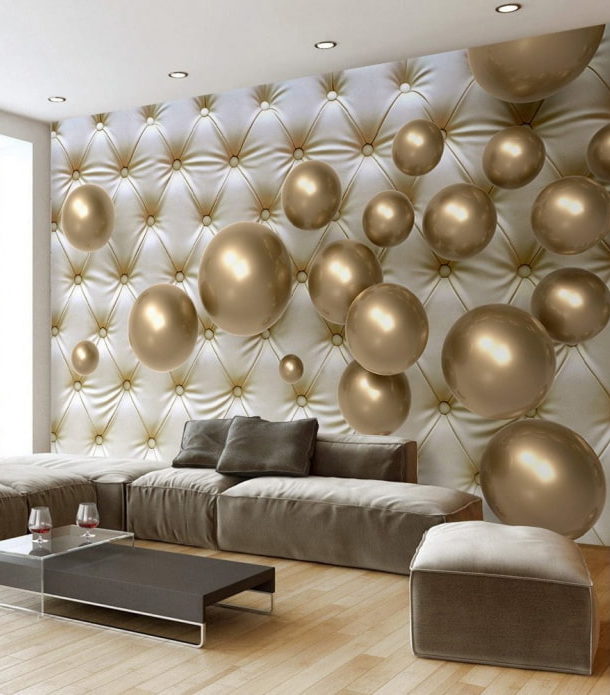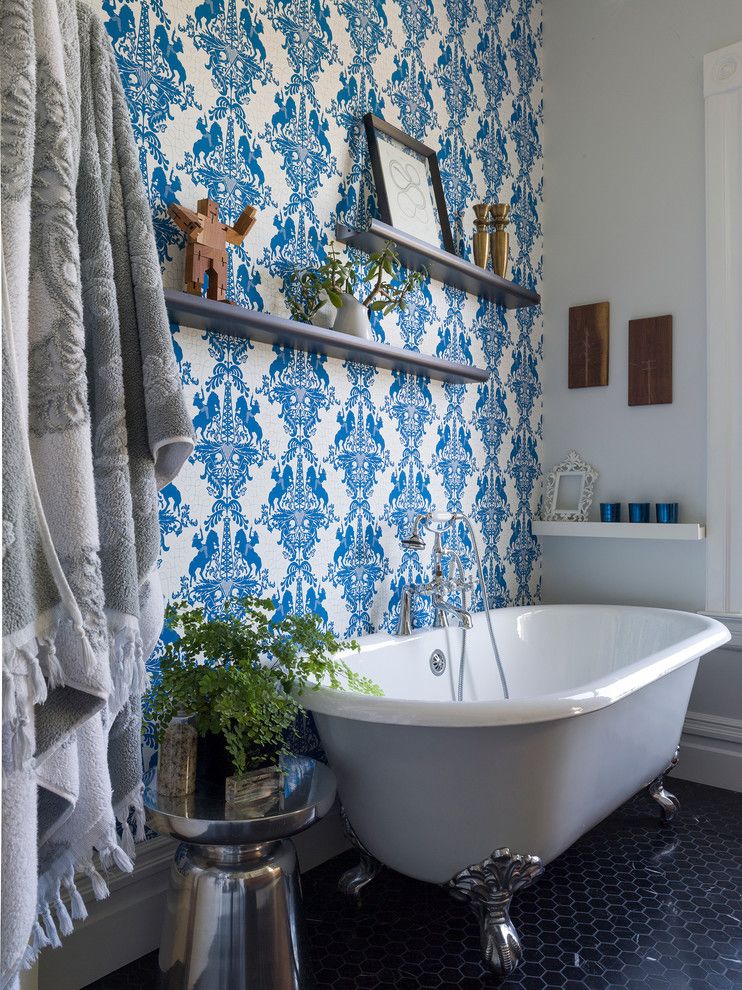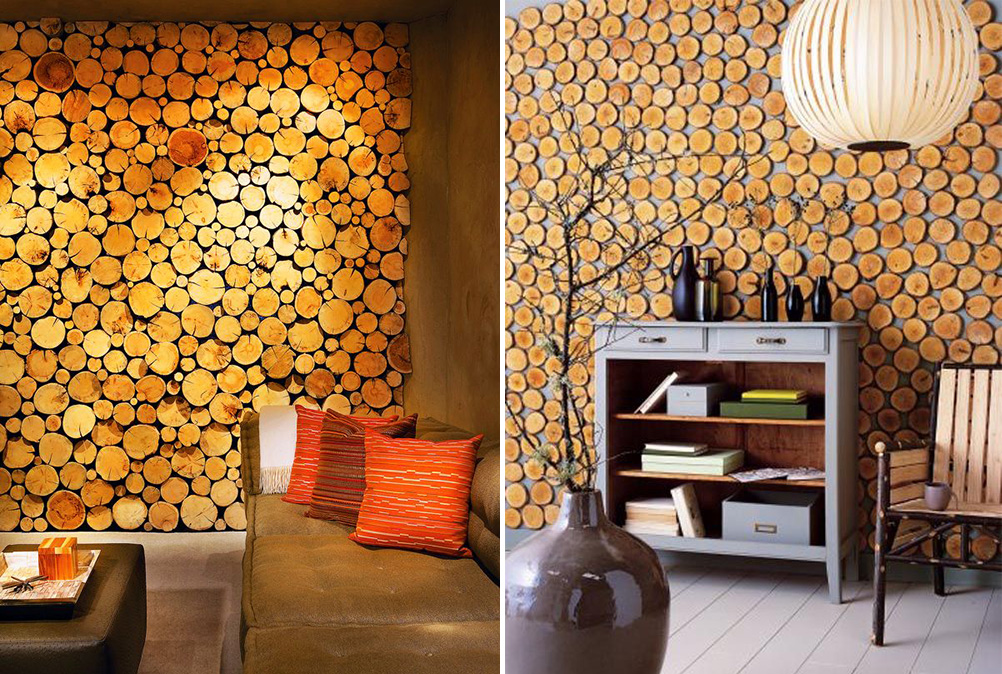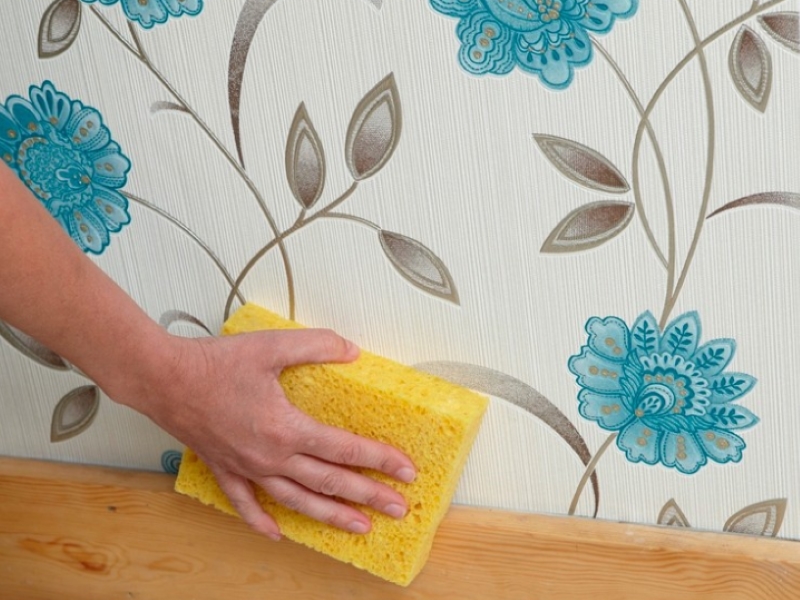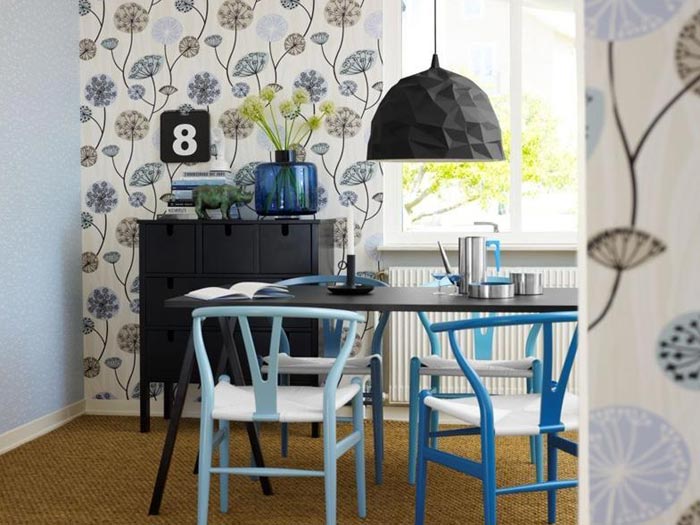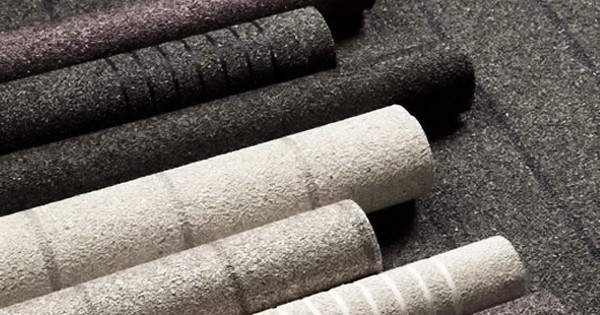Wallpaper under the skin in the interior: 5 tips for choosing and applying + photo
Wall decoration with wallpaper that imitates the color and texture of genuine leather is a fairly common design technique. Such wallpaper looks expensive, dignified, presentable and very realistic. However, in the pursuit of chic gloss it is very important not to overdo it. Otherwise, the refined interior can quickly turn into absurd and tasteless. This article will discuss how to properly apply and combine wallpaper under the skin in the interior. You will also find selection tips non-trivial finishes and many good photo examples.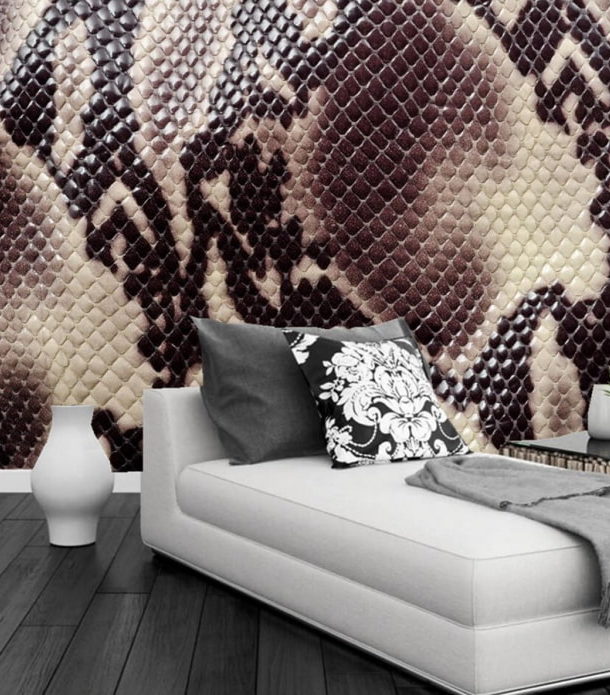
Production material
Wallpaper under the skin will always have a multilayer structure - the base and the upper decorative layer on which the drawing is applied. 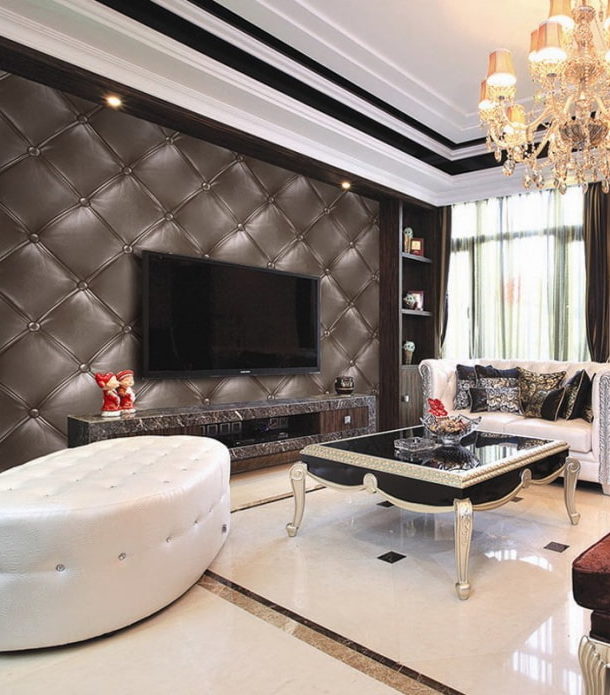 Moreover, the surface of the last layer can be both smooth and textured. Depending on the base material, the following types of battles are distinguished:
Moreover, the surface of the last layer can be both smooth and textured. Depending on the base material, the following types of battles are distinguished:
- Paper. This is the most affordable option. Canvases are several layers of fairly thick paper. Due to the use of natural material, such wallpapers have high vapor permeability rates. Your walls will "breathe", which means they are not afraid of education mold or mildew. Full surface paper wallpaper will be smooth, and the picture itself will not differ in a high level of realism. And in terms of strength and moisture resistance, they will be inferior vinyl or non-woven products. This finish can only be used in dry, well-ventilated areas. Also, do not forget that paper does not maintain color stability well when exposed to ultraviolet light. To give higher performance and decorative characteristics, a thin layer of vinyl can be applied to the paper base. Such a surface will be more resistant to moisture and sunlight. There is an opportunity to make the decorative layer embossed, to give it a light shine, which generally makes the pattern more natural;

- Vinyl. They are distinguished by high aesthetic qualities. The pattern and plot can be conveyed as realistically as possible. In this case, polyvinyl chloride is used as the basis. Vinyl wallpapers are highly durable, lightfast, moisture resistant. If the surface was additionally varnished to give a decorative shine, this also increases the life of the coating as a whole. However, despite all the advantages, do not forget that vinyl refers to materials that do not allow air to pass through. You can paste over such wallpapers only rooms with a good level. ventilation;

- Non-woven. Such wallpapers are the most expensive. But their cost is fully justified by both operational characteristics and high aesthetic indicators. The coating is moisture resistant. Wallpaper can be washed repeatedly with a damp cloth or sponge without harming the surface. Non-woven fabric is very dense, it does not stretch and does not distort during gluing, which makes it possible to preserve the exact geometry of the pattern and to dock the paintings as accurately as possible. The material passes air. Satin may be applied to its surface. Also, the surface may consist of matte and glossy areas at the same time;

- Self adhesive. Such wallpapers are made on the basis of PVC film. But unlike the previous three species, they are single-layer.This makes the coating impractical and not durable. The quality of the drawing itself also leaves much to be desired, one could only dream of its realism. And choosing a self-adhesive wallpaper of dubious quality, there is a high probability that they will eventually begin to peel off at random.

- Also under the order can make wallpaper from really natural cowhide skin which is subsequently stamped. Such wallpapers can imitate the texture of the skin of a crocodile, as well as python and many others. They are produced not in the form of rolled material, but more often in the form of sheets that still need to be combined skillfully. The cost of such a product will be very high, and there can be no talk of humanity in this case.

Popular pattern options
The whole variety of prints and plots can be divided into several groups: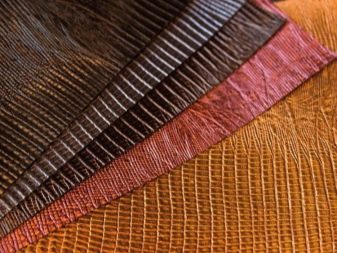
- Crocodile skin. Such a pattern can be called quite strict. Such wallpapers are mainly chosen for decoration of study rooms, conference rooms or spacious living rooms in private mansions. In nature, the skin of a crocodile is very dense and rough, so if you want to convey this effect as naturally as possible, you should choose vinyl or non-woven wallpaper. The pattern is distinguished by the clarity of lines and even some kind of rudeness, so it is better suited for use in men's interiors. Crocodile trim will also be appropriate in bright hallways;

- Snake skin. This pattern is very popular due to its dynamism, which is achieved due to the difference in size of individual flakes and their uneven arrangement. With the help of such wallpapers, you can easily select a particular area and make the interior voluminous. Wallpaper under snake skin is most often used to decorate bedrooms or workrooms. In this case, it all depends on the color scheme. Very harmoniously, this print complements the interiors in a marine or modern style. high tech or minimalism;

- Zebra. Unlike rough and “cold” wallpapers under the skin of a crocodile or reptile, wallpaper under a zebra has a certain softness of lines and bring cosiness to the room. That is why such a print can be used even for decorating a child’s room or a girl’s bedroom. Very popular are wallpapers under a zebra with pink accents. And the classic coloring is a dynamic complement to the restrained monochrome interiors in modern styles;

- Leopard. If such a coloring is abused, then the interior may look vulgar. Leopard wallpaper has a pleasant warm color scheme, so it gives the interior warmth and coziness, but in order not to spoil the impression, they must be used in moderation, dosed. Most often, this is only a small fragment of the wall with a width of not more than 1 meter, which is designed to draw attention to a particular area. Leopard wallpaper is most appropriate in bedrooms or living rooms;

- Stripes. If all of the above plots are more suitable for interior decoration in progressive modern styles, then for classic or ethnic interiors it is better to choose wallpaper under the skin with a pattern in the form of stripes. This print is symmetrical, the surface can also be textured and have a little glossy shine, which will give the interior a luxury;

- Quilted leather. No less popular type of wallpaper, which is characterized by restraint and luxury at the same time. This pattern will be a great addition to classic interiors or interiors in the English style. One of the most popular stories is a carriage screed. It’s customary to decorate a wall that adjoins with such wallpaper bed. Often such wallpaper called 3D for their visual volume effect. To the touch, most often the surface is smooth.

Note, that any print is repetitive, so before deciding to buy this or that type of wallpaper under your skin, be sure to expand the roll and see how the strip looks in general.It is possible that the pattern will be excessively ruffled.
Color spectrum
In addition to the classification according to the print used, wallpaper under the skin can be divided by color. 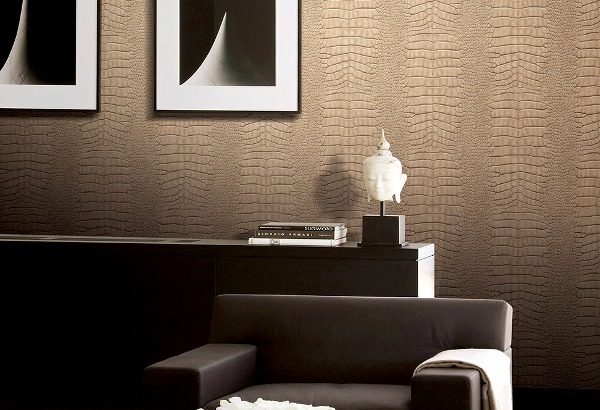 In this case, the same pattern can be made in each version. The color scheme is one of the determining factors in the selection of such a material.
In this case, the same pattern can be made in each version. The color scheme is one of the determining factors in the selection of such a material.
- Dark shades. Dark textures look as natural as possible, but are often overly gloomy. Therefore, this is not the best option for use in a small room.
 The dark finish harmoniously blends into bright interiors as a contrasting element. At the same time, you need to paste over with such wallpaper either one separate wall, or a small fragment of it. To emphasize the noble texture on dark wallpaper, it is recommended to arrange additional illumination;
The dark finish harmoniously blends into bright interiors as a contrasting element. At the same time, you need to paste over with such wallpaper either one separate wall, or a small fragment of it. To emphasize the noble texture on dark wallpaper, it is recommended to arrange additional illumination;
- Light shades most often used for decoration in lounges. Light wallpaper under the skin looks very elegant, while the texture on them remains quite distinguishable.


- Multi-colored palette can be represented in shades of red, blue, green, yellow. It is customary to use colored wallpaper under the skin, for example, for finishing an accent wall, for niche highlighting or wall ledges. In this case, the color must necessarily overlap with another decor item in the interior.

Interior Applications
Wallpaper under the skin, especially when it comes to vinyl or non-woven fabrics, have a very high performance and long life. 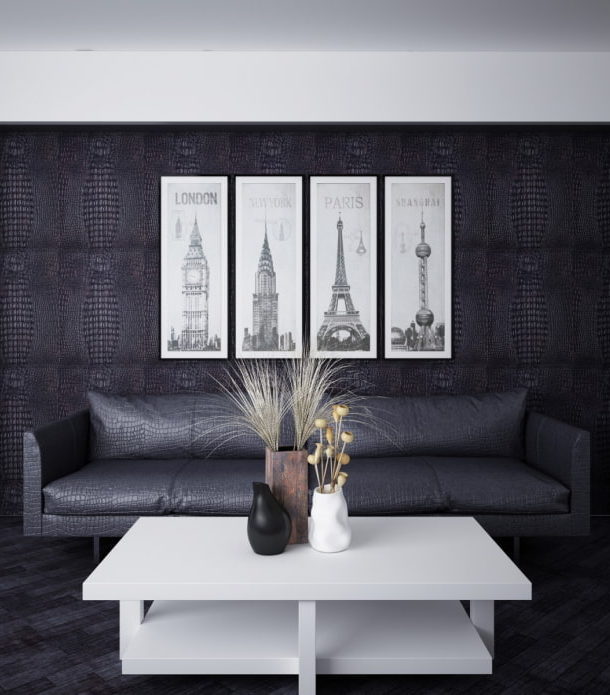
- A similar finish is good for registration hallways into which enough light falls. The surface will be easy to care for due to the ability to wash it with a damp sponge, even with mild detergents. It is recommended to paste over one of the walls, one that will not be blocked by furniture;

- IN living rooms it is recommended to paste over with leather wallpaper that wall or its part, which will not be constantly in your sight. Otherwise, such a print can bore you quickly and even start to annoy;

- IN children’s In rooms, wallpaper under the skin is not recommended. An exception can only be the print "zebra" and if the owner of the room is a teenager;

- IN bedrooms for adults, this finish can be used to highlight the bedside zone. Never place mirrors or mirror panels in front of such a finish. This applies to decoration in all rooms;

- As a decoration material for walls in the kitchen such wallpapers are rarely selected. A more common use is gluing. kitchen apron leather wallpaper. But, even despite their wear resistance, we would recommend protecting the finish with clear glass;

- Wallpaper under the skin is quite common in bathrooms rooms. This is a great option to diversify the interior of a small room. Such wallpapers are quite harmoniously combined with tiled trim due to its high density.

Useful Tips
And finally, a few useful tips:
- Wallpaper under the skin is quite dense, and therefore heavy. So that after some time after gluing, the canvas does not begin to lag, it is recommended to use a special glue that is selected in accordance with the base material;

- In no room, nor is it permissible to use such a finish for facing all walls;

- Wallpaper under the skin with gold, silver or bronze veins is recommended to be used only in classic interiors;
- Leather wallpapers are very harmoniously combined with glass surfaces;

- It is very important to choose the accompanying finishing materials for walls of a similar density;
- Leather wallpapers are perfectly combined not only with smooth ordinary wallpapers, but also with light texture;
- So that the transition from one material to another does not catch the eye and looks harmonious, you can use decorative baguettes or moldings;

- In no case do not create wall panels from such wallpaper.

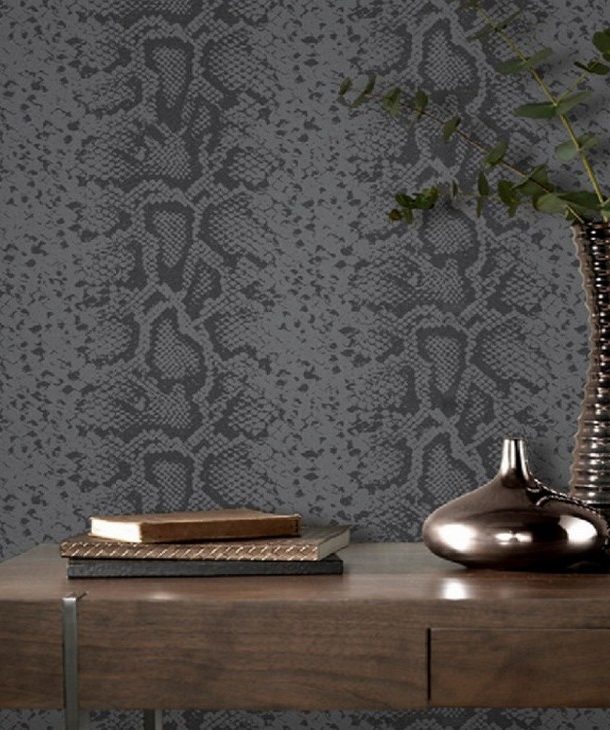
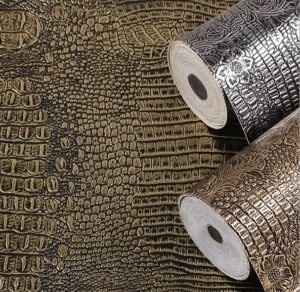
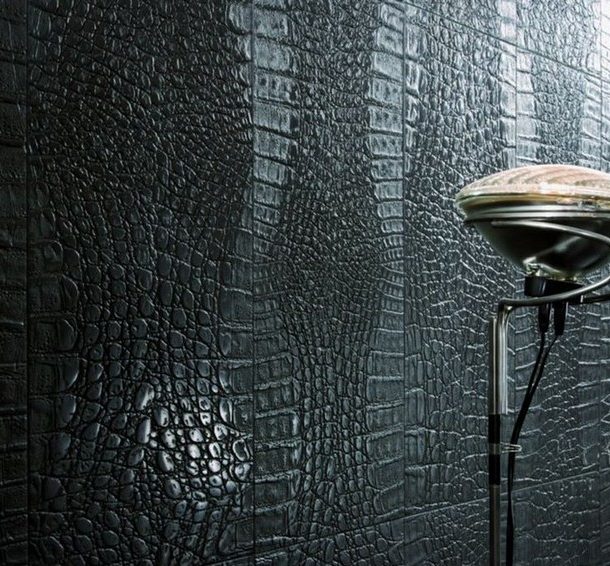
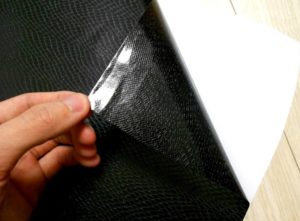
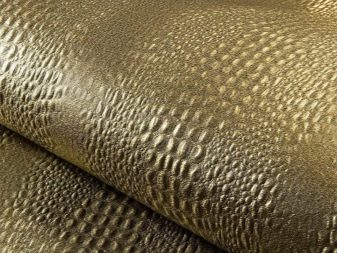
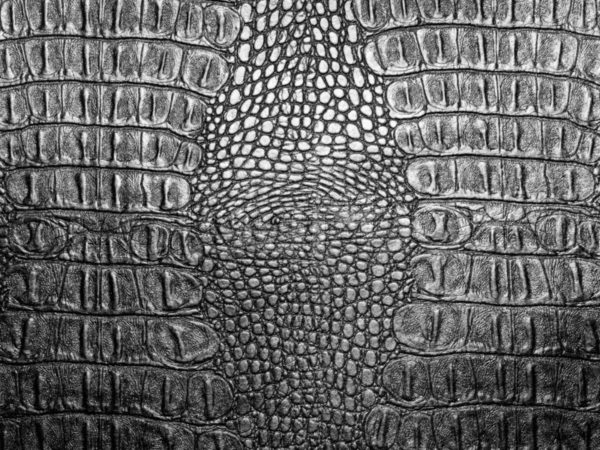
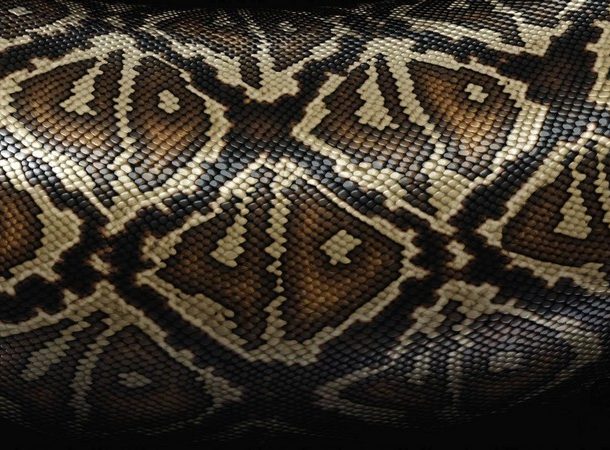

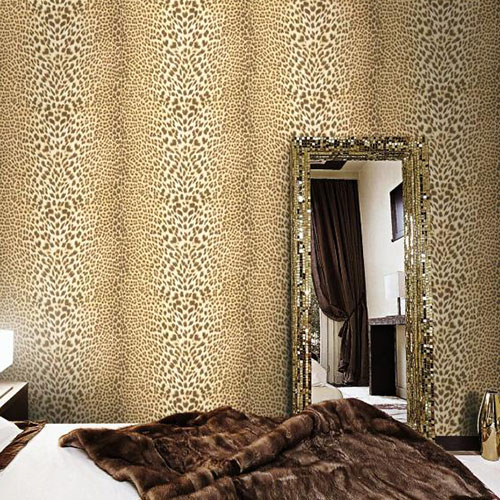
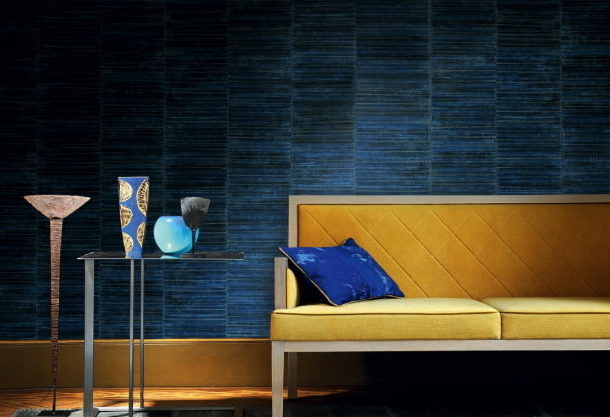
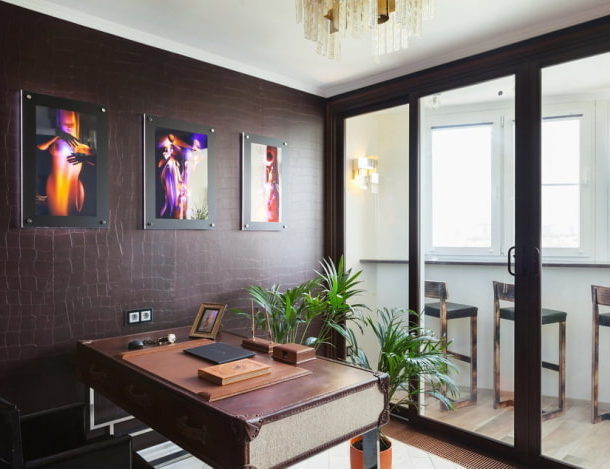
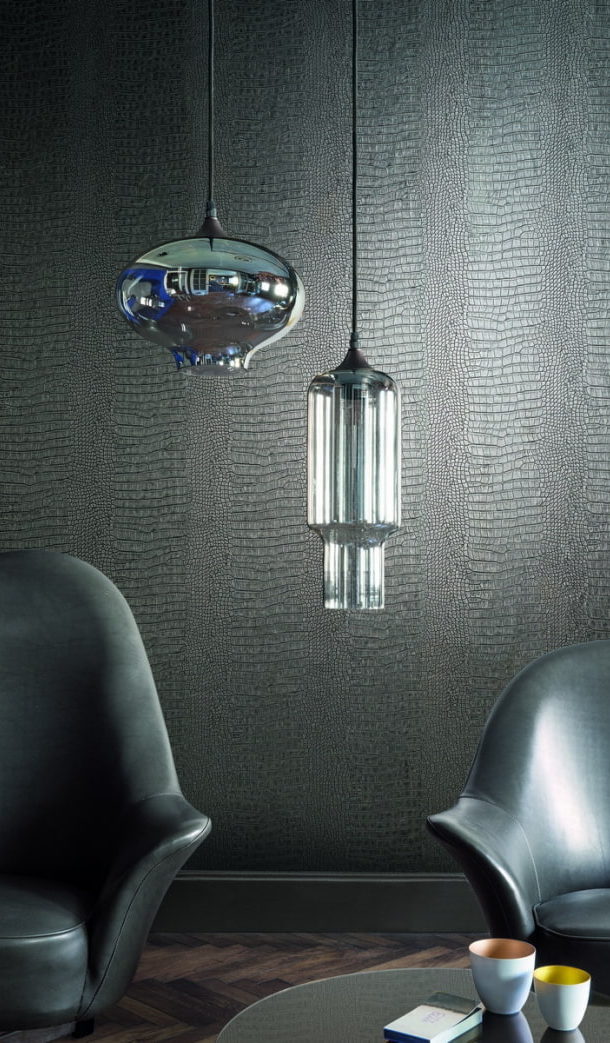 The dark finish harmoniously blends into bright interiors as a contrasting element. At the same time, you need to paste over with such wallpaper either one
The dark finish harmoniously blends into bright interiors as a contrasting element. At the same time, you need to paste over with such wallpaper either one 